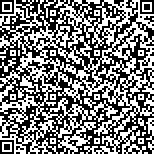本文已被:浏览 282次 下载 156次
Received:December 11, 2023 Published Online:October 20, 2024
Received:December 11, 2023 Published Online:October 20, 2024
中文摘要: b>目的 基于检验数据和增强CT图像探讨机器学习方法在早期预测原发性肝细胞癌(HCC)的临床价值。
方法 回顾性分析2013至2021年十堰市太和医院654例肝脏疾病患者的检验数据及增强CT图像,其中原发性HCC患者199例,肝炎患者223例,肝硬化患者232例。将其以7∶3的比例随机分配到训练集和测试集。通过逻辑回归、支持向量机、随机森林、决策树及AdaBoost 5个算法按照检验数据、增强CT图像以及两者联合三种方式训练模型,采用受试者工作特征曲线计算曲线下面积(AUC)、准确率、灵敏度及特异度对模型进行验证。
结果 从数据模态上分析,联合检验数据和增强CT图像的多模态方式比单模态方式显著提高原发性HCC的分类准确度。从机器学习模型上分析:(1) 随机森林算法在检验数据组中对原发性HCC识别效能较高,准确率为84.77%,特异度为89.96%,灵敏度为86.11%,AUC值为0.889;(2) 决策树算法在动脉期增强CT组中对原发性HCC识别效能较高,准确率为76.14%,特异度为77.84%,灵敏度为61.90%,AUC值为0.789;(3) AdaBoost算法在检验数据联合动脉期增强CT数据的联合数据组中对原发性HCC识别效能更高,准确率为87.31%,特异度为88.28%,灵敏度为84.62%,AUC值为0.918。
结论 基于检验数据与增强CT图像多模态数据构建的模型均能较好预测原发性HCC,其中基于检验数据及动脉期增强CT影像组学特征构建的AdaBoost模型表现出更高的预测价值。
Abstract:ObjectiveTo investigate the clinical value of machine learning methods for the detection of primary hepatocellular carcinoma (HCC) using laboratory data and enhanced CT imaging.
Methods The enhanced CT images and test data of 654 patients with liver diseases admitted in Shiyan Taihe Hospital from 2013 to 2021 were retrospectively analyzed. These consisted of 199 patients with primary HCC, 223 patients with hepatitis, and 232 patients with liver cirrhosis. They were randomly allocated to the training set and testing set at 7∶3. Five machine learning algorithms (including logistic regression, support vector machine, random forest, decision tree, and AdaBoost) were implemented to train the model using test data, CT enhanced images, and combined test data/CT images. Receiver operating characteristic curve was used to calculate the area under curve (AUC), accuracy, sensitivity and specificity to verify the model.
Results From the analysis of data modality, the use of a multimodal method combining test data and enhanced CT images significantly improved classification accuracy of primary HCC compared to the unimodal modality. From the analysis of the machine learning models: (1) The detection efficiency of primary HCC in the test dataset was higher when using the random forest algorithm, with an accuracy rate of 84.77%, specificity of 89.96%, sensitivity of 86.11% and AUC value of 0.889; (2) The detection efficiency of primary HCC was higher when applying the decision tree algorithm to the arterial phase enhanced CT group, with an accuracy rate of 76.14%, specificity of 77.84%, sensitivity of 61.90%, and AUC value of 0.789; 〖JP2〗(3) The AdaBoost algorithm applied to the combined data set of test data and arterial phase enhanced CT data demonstrated higher detection efficiency for primary HCC, with an accuracy rate of 87.31%, specificity of 88.28%, sensitivity of 84.62%, and AUC value of 0.918.
Conclusion The construction of models using test data and enhanced CT images with multimodal data offers enhanced prediction of primary HCC. Notably, the constructed AdaBoost model based on test data and arterial phase enhanced CT radiomics features can exhibit greater predictive accuracy.
keywords: Primary hepatocellular carcinoma Machine learning Enhanced CT Combined detection Predictive model
文章编号: 中图分类号:R735.7 文献标志码:A
基金项目:国家自然科学基金资助项目(32060150);“十四五”湖北省高等学校优势特色学科群(现代医学)项目(2023XKQT5)
引用文本:
